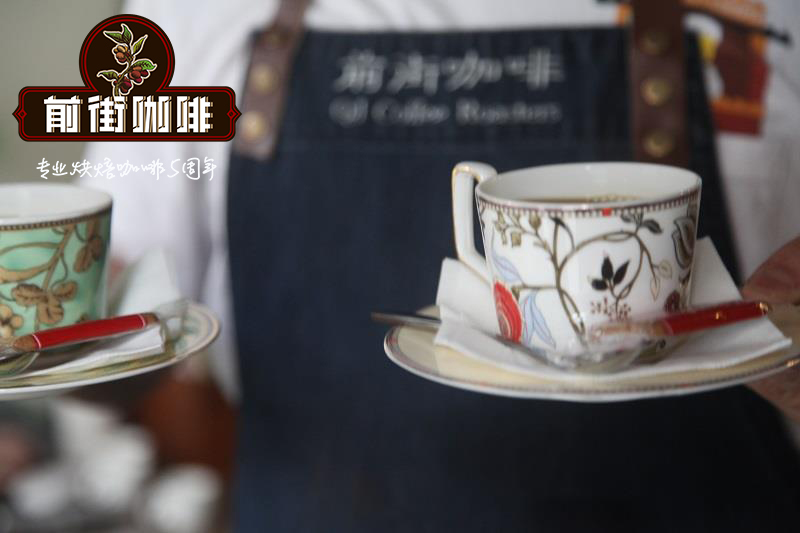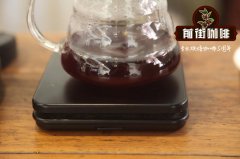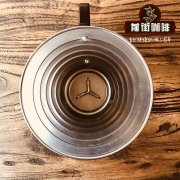Su Island Light Golden Mantenin Coffee Brand recommended. What are the Indonesian Mantenin Coffee producing areas?

Professional coffee knowledge exchange more coffee bean information please follow the coffee workshop (Wechat official account cafe_style)
There is an interesting story about the origin of Manning coffee.
About 1945, the Japanese soldiers stationed there drank the local coffee in Sumatra and thought it was very good, so they wanted to ask the vendor the name of the coffee, but because of the language barrier, the Manning vendor mistakenly thought he was asking where he came from.
So he answered "Manning".
Japanese soldiers who retired a few years later, still thinking about this beautiful taste, went to Sumatra to ask about the export of local "manning coffee" to Japan, which has been popular ever since.
Lindong Gold Manning, Sumatra, Indonesia, in Asia, is a large number of loving beans that drink strong coffee. It tastes as sweet as honey, with a soft bitterness, producing bursts of sweet aroma and throat rhyme. This bean has a very good sweet and sweet characteristics.
Manning was once hailed as the best unique wet peeling coffee bean in the world.
Taiwan has a high opinion of Mantenin Coffee and is one of the coffee products with the highest acceptance of single coffee, second only to Japan.
Nowadays, as long as the coffee red cherry fruits harvested in Indonesia are processed and made by unique wet peeling, they will be sold as Mantenin coffee beans.
Coffee producing countries in the old world continue to bring us a wonderful taste experience of ancient early taste, rich and wide amplitude, which makes us feel the long history and complexity of the coffee world. So what does coffee look like in the new world?
Little one's division of the new world and the old world mainly adheres to the idea of Mr. Han Huaizong, a Taiwanese coffee master, and divides it with the time when the European powers began to colonize and invade in the 18th century. In this way, the coffee-producing countries of the New World are mainly represented by Indonesia, Caribbean islands, Central and South American countries and Kenya and other emerging African coffee-producing countries.
The most prominent feature of the coffee producing countries in the new world is that the variety of coffee beans is relatively single, and the variety improvement is generally based on the principle of yield priority and flavor assistance. After more than 300 years of development, the pursuit of coffee varieties in the New World is roughly in the following order: Typica-Bourbon-Kaddura (Caturra)-Catimor-Catuai-Pacamara (Pacamara) and Geisha.
At present, the three major categories of coffee varieties in the New World are roughly as follows: 'ordinary low-end commercial varieties', mainly Katim, with high yield, disease resistance and cold tolerance, but with a slightly bitter taste at the end of the drink; and 'advanced commercial beans'. Such as Tibica, bourbon, Kaddura, Kaduai, S28 and S34, the yield is small, and the flavor is as elegant as cultivated properly. The 'boutique variety', led by Rosa Rosa and Pacamara, has high infection rate, complex treatment process and low yield, but its charming flavor can be called excellent.
In addition to improving coffee varieties, the coffee producing areas of the New World have also given birth to many processing processes for raw coffee beans, such as water washing, semi-washing, honey treatment, and so on, which has both advantages and disadvantages, improving coffee quality stability and flavor cleanliness, but also sacrificing the amplitude of high-quality game.
Next, let's select well-known producing areas and elaborate on the producing areas of New World coffee in chapters. Let's start with Indonesia.
Coffee cultivation in Indonesia began in 1696-1699 when the Dutch East India Company transplanted Tibica from Ceylon to Java. Java is familiar as the first stop of a coffee tour in Indonesia, but today Java grows robusta coffee beans. Then the Dutch found that Sumatra was larger than Java, the poison-feeding climate was more suitable for the growth of Tibica, and its geographical location was more convenient for coffee to be transported to Europe, so in 1835, a batch of Tibica seedlings from Java were unloaded in the Natal region on the west coast of Sumatra and then transported to the Mandailing for breeding. This is the predecessor of the famous Mandehling coffee, which got its name because of the misunderstanding caused by the language failure of Japanese soldiers during World War II.
By 1888, the Tibica seedlings of the Mandaining Heights were introduced to the more suitable Doba Lake District of Jiangsu Province (Lake Toba) and became the main producing area of Mandenin coffee, while the Mandaining Highlands was gradually reduced to the Robusta producing area. In 1924, Lake Tawa in Aceh province introduced Tibica from Lake dopa, the manning coffee sung today. However, due to World War II and political unrest in Indonesia, it was not until 2005, when the Indonesian tsunami prompted peace in Aceh, that Indonesia Mantenin was able to re-emerge and open its exports on a large scale, thus continuing to shine for the world of boutique coffee.
Indonesia Mantenin is loved by coffee fans all over the world because of its outstanding mellowness. today, Indonesia has the legend of "two lakes and two mans", that is, Mantenin coffee produced by Lake dopa in Jiangsu Province and Mantenin coffee produced by Lake Acitava. The former tastes more stuffy, low and slightly fragrant, while the latter has a brighter acidity and occasional fir or woody flavor.
There is another bright spot in Indonesian coffee, but the low-end coffee beans grown in other producing areas can be generous and brilliant in Aceh, Indonesia. Aceh's interspecific hybrid beans, such as Tim and Katim, are mellow, caramel and fruity, with slightly woody and herbal flavors, and are known as the classic regional flavor of Sumatra. This stems from Indonesia's unique wet planing process, in which coffee beans are shelled and dried to a moisture content of 12% 13% in just 2-4 days, which is much lower than the sun and washing methods in Central and South America and Africa.
END
Important Notice :
前街咖啡 FrontStreet Coffee has moved to new addredd:
FrontStreet Coffee Address: 315,Donghua East Road,GuangZhou
Tel:020 38364473
- Prev

Indonesia Sumatra Gold Manning Tiger Coffee Bean Sumatran Tiger Mandheling Story
Professional coffee knowledge exchange more coffee bean information please follow the coffee workshop (Wechat official account cafe_style) Sumatran Tiger Manning Coffee this is a strict sense not called Huangman Huangman, the acquisition company in Lindong Niffit (Lintong Nihuta), West Baolong (Siborongborong), Delaoke Sanguru (Doloksanggul) area collected from small farmers
- Next

Indonesia Heirloom Manning what's the taste of sweet mango in the sun _ manning in the sun
For more information on coffee beans, please follow the coffee workshop (official Wechat account cafe_style). Arabica coffee beans are of the best quality by hand in the most traditional way. The beans are naturally fermented and dried in the natural sun, and the fruit aroma and sugar are converted and concentrated in the coffee beans. The manual process is tedious and the failure rate is high, so every bean is a farmer.
Related
- Detailed explanation of Jadeite planting Land in Panamanian Jadeite Manor introduction to the grading system of Jadeite competitive bidding, Red bid, Green bid and Rose Summer
- Story of Coffee planting in Brenka region of Costa Rica Stonehenge Manor anaerobic heavy honey treatment of flavor mouth
- What's on the barrel of Blue Mountain Coffee beans?
- Can American coffee also pull flowers? How to use hot American style to pull out a good-looking pattern?
- Can you make a cold extract with coffee beans? What is the right proportion for cold-extracted coffee formula?
- Indonesian PWN Gold Mandrine Coffee Origin Features Flavor How to Chong? Mandolin coffee is American.
- A brief introduction to the flavor characteristics of Brazilian yellow bourbon coffee beans
- What is the effect of different water quality on the flavor of cold-extracted coffee? What kind of water is best for brewing coffee?
- Why do you think of Rose Summer whenever you mention Panamanian coffee?
- Introduction to the characteristics of authentic blue mountain coffee bean producing areas? What is the CIB Coffee Authority in Jamaica?

